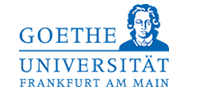 |
 |
 |
 |
 |
 |
WDR5 Antagonism-A WINning Approach

WD Repeat domain 5 (WDR5) is a critical part of the human trithorax/COMPASS complexes which are responsible for methylation of lysine 4 on histone 3 (H3K4) via one of several catalytic subunits, Mixed-Lineage Leukemia (MLL), MLL2, MLL3, or MLL4 proteins. Early hypotheses that antagonism of the MLL-WDR5 interaction might lead to reduction of H3K4 methylation encouraged us to search for small-molecule inhibitors of this interaction (PubMed 22989411). More recently, through a collaboration with the Ontario Institute for Cancer Research (OICR) we developed the chemical probe, OICR-9429, a potent, selective, and cell-penetrant WDR5 antagonist. Treatment of normal cells with OICR-9429 indicates that this compound disrupts the MLL-WDR5 interaction in a dose-dependent fashion.
Cellular studies at CeMM (Vienna) in the laboratories of Giulio Superti-Furga revealed that WDR5 interacts aberrantly with mutant CCAAT-enhancer Binding Protein a (CEBPa; p30) resulting in dysregulated MLL and H3K4me3 chromatin marks in p30 acute myeloid leukemia (AML) cells. OICR-9429 treatment of a mouse model of p30 leukemia cells triggered differentiation, phenocopying wdr5 RNAi treatment. In addition, OICR-9429 significantly reduced the viability of human p30 AML samples, but not AML samples with different genetic backgrounds.
OICR-9429 is the first non-peptidic WDR5 antagonist and exhibits promising cellular biology for treatment of AML.
Nature Chemical Biology: http://dx.doi.org/10.1038/nchembio.1859

